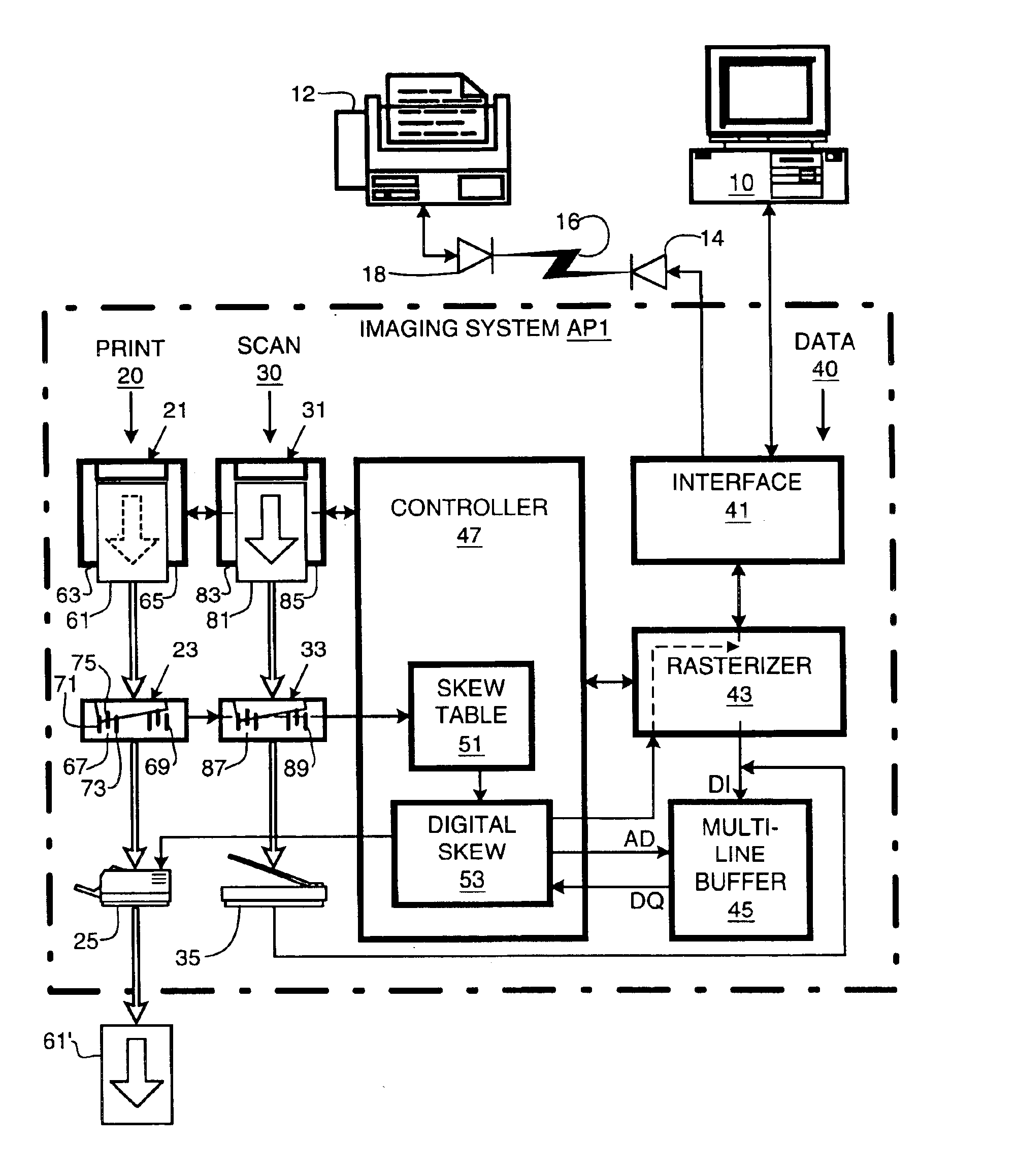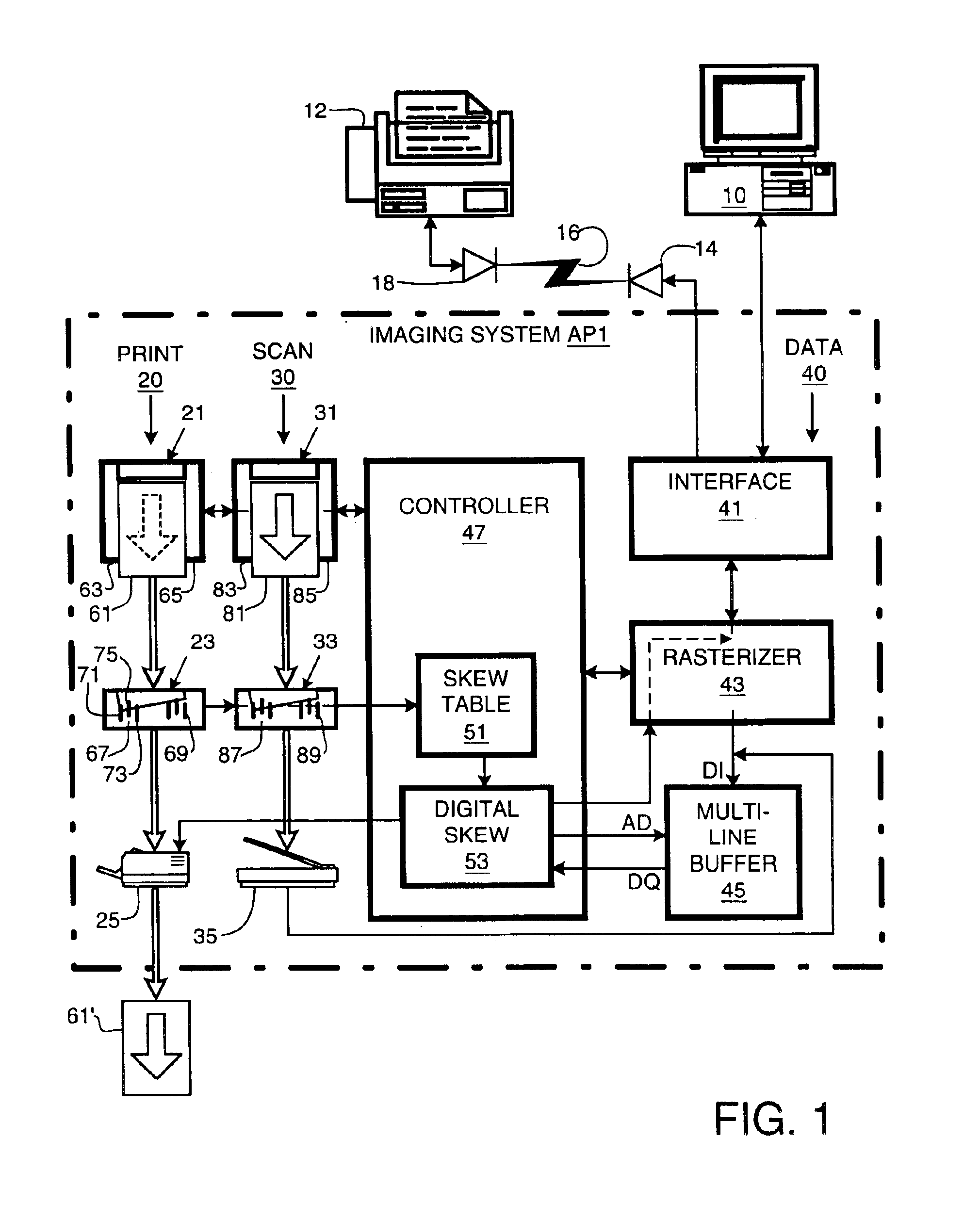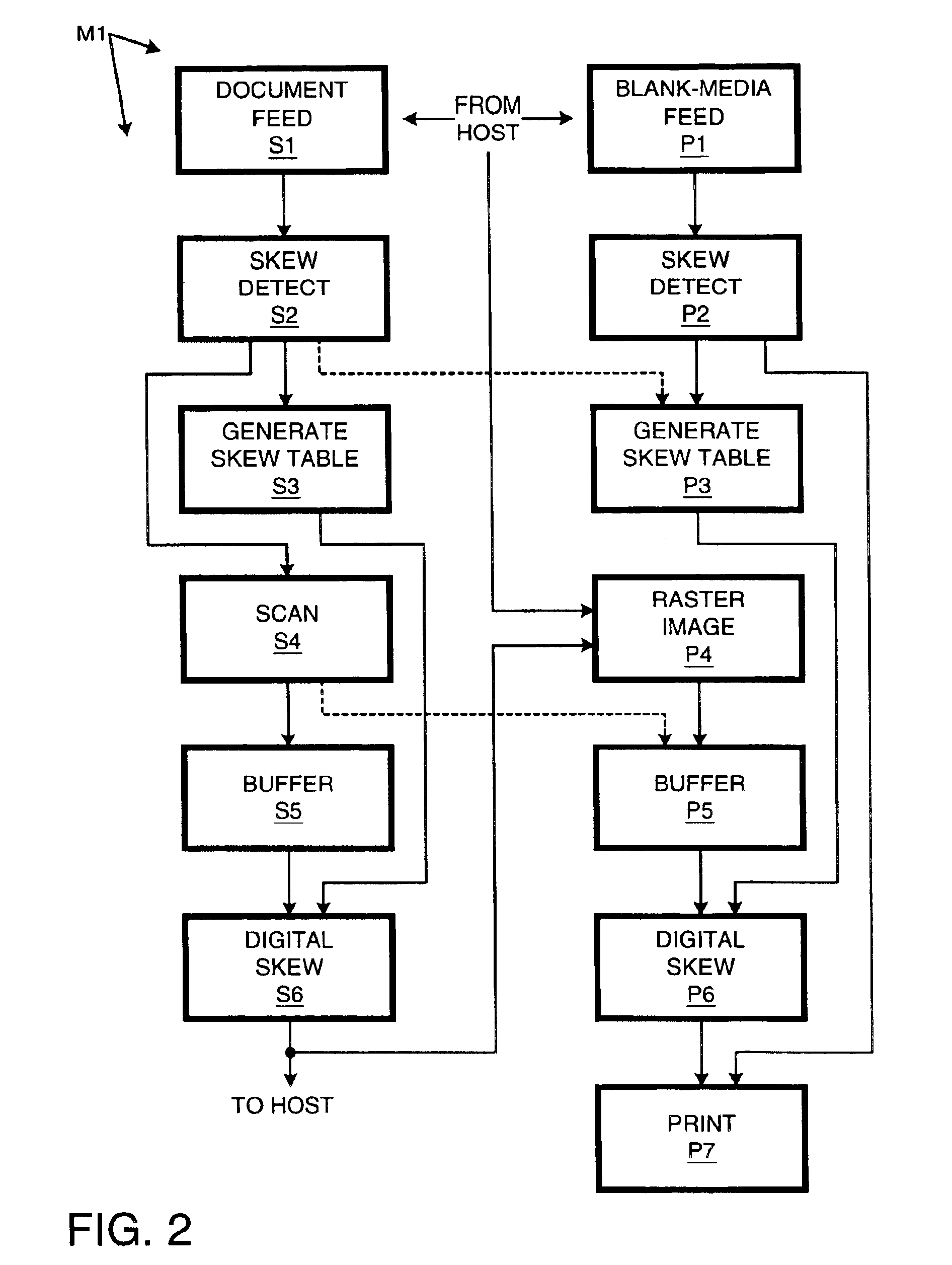Skew compensation for raster image transfer device
a technology of raster image and skew compensation, which is applied in the field of image transfer devices, can solve the problems of image skew, electronic and optical components are falling, and the cost of image-transfer devices are consuming increasing proportions of the cost of sheet-feed mechanisms, so as to achieve the effect of relaxing mechanical sheet-feed tolerances and prolonging device li
- Summary
- Abstract
- Description
- Claims
- Application Information
AI Technical Summary
Benefits of technology
Problems solved by technology
Method used
Image
Examples
Embodiment Construction
In accordance with the present invention, a multifunction imaging system AP1 provides for print, scan, digital copy, and facsimile functions, as shown in FIG. 1. The print function operates in response to commands and print data received from a host computer 10. The scan function can be initiated by host computer 10 or locally, in which case system AP1 signals host computer 10 that it is to be receiving scan data. Digital copying involves scanning and then printing and can be handled on a standalone basis.
Faxing, which allows graphic communications with a remote facsimile machine 12, has both transmit and receive modes. Transmit mode is similar to the scan function, while receive mode is similar to the print function. To enable faxing, imaging system AP1 is plugged into a telecommunications outlet 14, which is coupled via a telecommunications system 16 to another telecommunications outlet 18 into which remote facsimile 12 machine is plugged.
Imaging system AP1 provides a print-media ...
PUM
 Login to View More
Login to View More Abstract
Description
Claims
Application Information
 Login to View More
Login to View More - R&D
- Intellectual Property
- Life Sciences
- Materials
- Tech Scout
- Unparalleled Data Quality
- Higher Quality Content
- 60% Fewer Hallucinations
Browse by: Latest US Patents, China's latest patents, Technical Efficacy Thesaurus, Application Domain, Technology Topic, Popular Technical Reports.
© 2025 PatSnap. All rights reserved.Legal|Privacy policy|Modern Slavery Act Transparency Statement|Sitemap|About US| Contact US: help@patsnap.com



